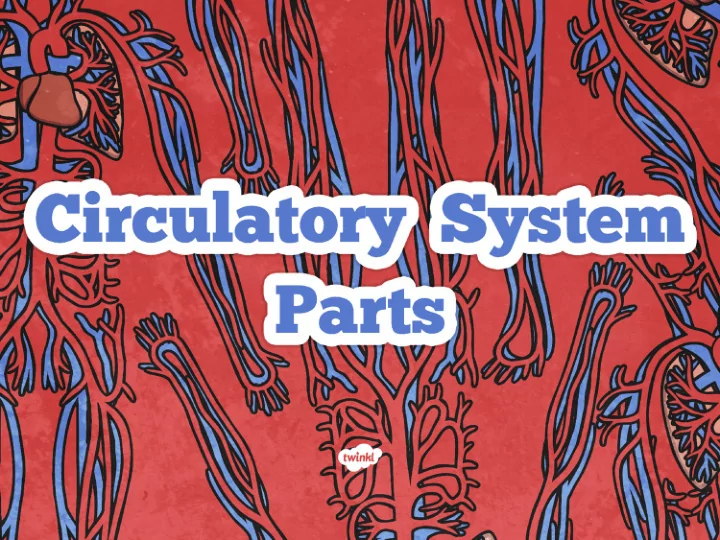

Learning Intention • To can identify and name the parts of the human circulatory system. Success Criteria • I can identify the parts of the circulatory system. • I can name the parts of the circulatory system.
Systems in the Body: a Reminder In Years 3 and 4, you may have learnt about a number of different systems in the body. We’re going to begin by seeing how much you remember!
Systems in the Body: Answers Swap your Systems in the Body Activity Sheets with a partner and mark their work using the table below: Click me for a larger version! Click anywhere to hide.
Systems in Your Body We have just reminded ourselves about the skeletal, muscular and digestive systems in the body. Do you know any other systems in the body? You have 2 minutes to discuss with your talk partner before feeding back to the class.
Systems in Your Body The system we will look at for the rest of this lesson is called the: ‘Circulatory System’. The word circulation means ‘the movement to, fro or around something’. Discuss the following questions with your talk partner: What does the system do? What are the parts of the system?
The Circulatory System What can you see? Is this what you expected? Are there parts you did not expect to be in the circulatory system?
Parts of the Circulatory System: Heart Click me for a larger The heart is a powerful organ that is version! situated between your lungs and protected by the ribcage. Click anywhere The heart pumps blood to the lungs to to hide. get oxygen. The heart then pumps this oxygenated blood around the body. The heart is split between the left and Click me right side. for a larger As you can see, it consists of many version! Click parts! anywhere to hide.
Parts of the Circulatory System: Lungs Click me for a larger version! Air breathed in through the mouth or nose travels down the trachea, through the bronchi into one of the lungs. The air Click travels into the bronchioles and into the air anywhere sacs (alveoli). to hide.
vein artery Parts of the Circulatory System: capillaries Blood Vessels Blood vessels can be split into three types: Arterial blood vessels - arteries: Arteries are blood vessels that carry blood away from the heart. Venous blood vessels - veins: Veins are blood vessels that carry blood to the heart. Capillaries: These are the smallest blood vessels. Capillaries connect the arteries and the veins and are the place where water and chemicals Click exchange in the blood. anywhere Click here for a diagram that shows how to hide. the three blood vessels are linked.
Parts of the Circulatory System
Systems In The Body: Functions Diagram of System What are Bones: Biceps: Stomach: Heart: the functions Joints: Salivary Lungs: of these glands: parts of Blood the Vessels: system?
Recommend
More recommend